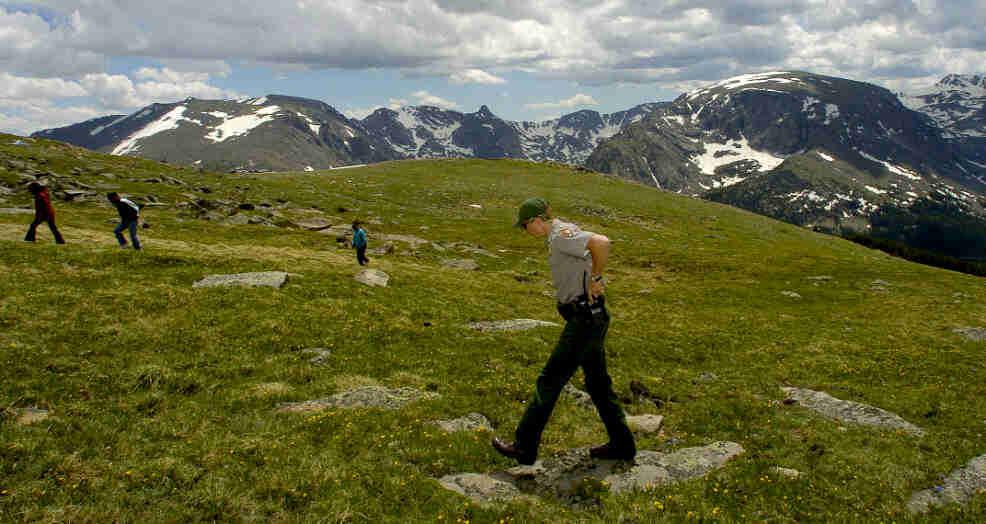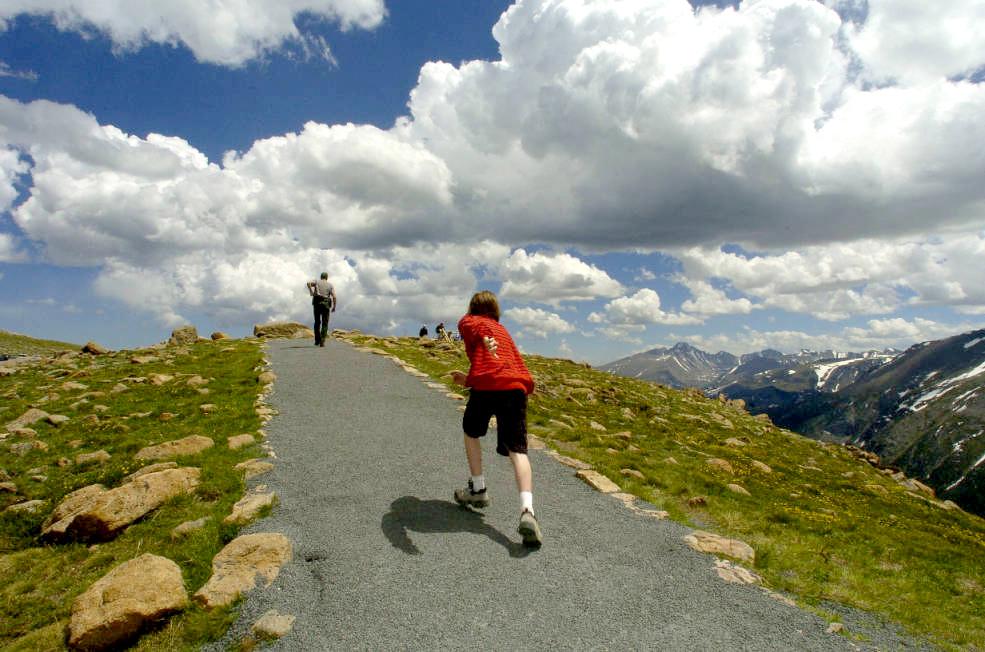Beatrice Willard Alpine Tundra Research Plots
Full Article
The Beatrice Willard Alpine Tundra Research Plots were established in 1959 by Beatrice Willard at two high-altitude locations along Trail Ridge Road in Rocky Mountain National Park (RMNP). Willard’s studies at the plots and elsewhere in the park were among the first to examine how visitors were affecting the park’s landscape and ecology, and her studies helped usher in a new era of park management that placed a greater emphasis on environmental protection. Research at the plots also laid the foundation for Willard’s understanding of alpine ecology, a field in which she became a nationally recognized expert.
In the decades after World War II, visitation to national parks spiked in the United States, leading to overcrowding and other park management problems. One response was Mission 66, a vast program to expand national park facilities in the late 1950s and early 1960s whose most recognizable result was the construction of visitor centers, such as RMNP’s Beaver Meadows Visitor Center.
As Mission 66 facilitated even greater visitation, parks such as RMNP began to study the effects of large numbers of tourists on the land. In 1958 RMNP contracted with the University of Colorado to conduct an alpine ecology disturbance study in the park. That summer Beatrice Willard, then a graduate student at the university’s Institute of Arctic and Alpine Research, made preliminary observations in the park with her adviser, John Marr. In June 1959, Willard established two small plots along Trail Ridge Road for a five-year study of how alpine tundra responded to and recovered from repeated human trampling. Willard also examined the effects of trampling at sites such as Iceberg Lake, Fall River Pass, Toll Pass, and the Tundra Nature Trail.
The two plots Willard established—one near the Rock Cut parking area and one at the Forest Canyon Overlook—are probably the oldest permanent alpine tundra research plots in the National Park Service and among the oldest in the world. The Rock Cut plot, which is still marked by a brown steel-tube fence, lies north of the road on a southwest-facing slope at an elevation of 12,110 feet. The Rock Cut parking area dated back to the construction of Trail Ridge Road in the early 1930s, and an old trail ran through the plot, allowing Willard to study long-term revegetation. The Forest Canyon Overlook plot, which once had a fence but is now unmarked, lies just west of the parking lot at an elevation of 11,716 feet. Willard chose the location because the Forest Canyon Overlook had just opened in 1958 but had already experienced substantial tundra damage from visitors.
In her studies, Willard observed how quickly alpine tundra was trampled, how long it took to recover, and how people behaved in creating shortcuts and walking off-trail. She found that it could take decades for tundra to recover from damage caused in just a year or two. In addition, any litter on the tundra could block sunlight from reaching the small and fragile plants, killing them within weeks and leaving bare spots on the landscape.
Willard’s findings helped trigger immediate and lasting policy changes in the park. One result was the paving of paths near parking lots and overlooks, including at Forest Canyon Overlook, to keep visitors from blazing their own trails across the tundra. The park also established new regulations for construction, developed a system of designated backcountry campsites, and started an educational program focused on tundra maintenance. In 1962 Willard helped teach the park’s first class on alpine tundra ecology.
Willard went on to publish important articles and books about alpine tundra, including Land Above the Trees (1972) with Ann Zwinger, and to influence environmental policy across the country, but she maintained close ties to the original research plots she established in 1959 along Trail Ridge Road. She held an official RMNP research permit until 1993, and she kept visiting the plots until a few years before her death in 2003.
RMNP continues to cite Willard’s work and use it to determine tundra policy. In the future, observations made at the plots over the past six decades will provide a valuable base of information for tracking the effects of increased visitation, climate change, and other forces acting upon sensitive high-altitude ecosystems.











